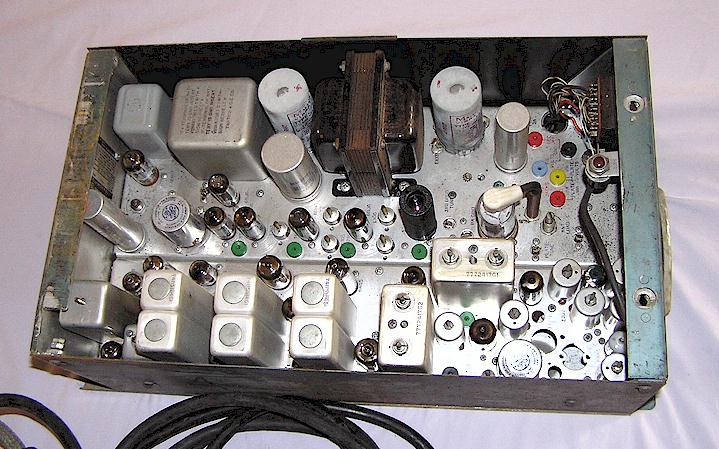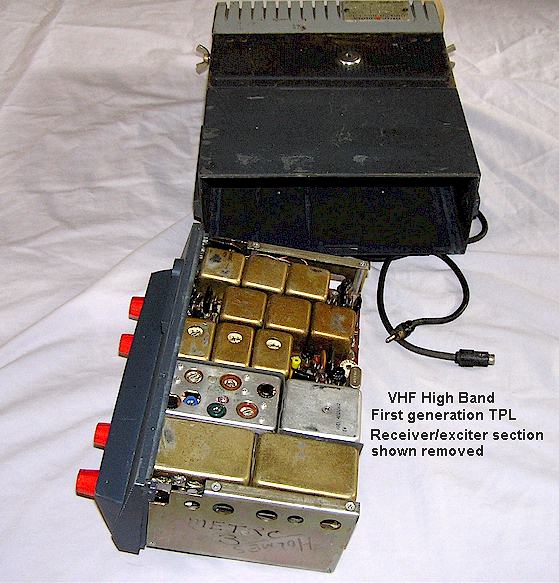Modernized Engine Wiring
You're right but I don't see that it matters. even a COUPLE of volts, if the harness had that much drop, would be compensated for by the regulator.
The BIG enemy is HEAT, mostly in the infamous, original, bulkhed connector.
Hell I managed to burn the first one of those up in the early '70's long before Al Gore invented the internet. My 70 RR was supposed to have an "optional" 60/65 amp alternator. Both the original owner and myself were radio amateurs, and both of us had some gear in the car. Back in those days, "solid state" ham gear was either not real popular, or real expensive.
I used to run some VHF/ UHF gear, known un-affectionately as "GE TPL" ("Toilet Paper Line) which had a 60-80W output PA on 2 meters. On top of that I had an old GE "pre Prog" receiver and could work full duplex between UHF and VHF on the local San Diego repeater, which, interestingly, is still online today, WB6WLV.
http://www.wb6wlv.com/
GE "pre Prog," so named "after the fact" because it was made BEFORE (pre) the "Progress Line." Huge, Heavy, and a Watt Waster. Tubes. Vibrators
From here:
http://www.wb6nvh.com/GE/GEhist1.htm

and the hated "TPL" "Transistorised Progress Line", or "Toilet Paper Line." I made a latching relay control for RX/ TX channel selection--they used crystals, remember? and mounted it in my ashtray. Had a handset which hung on the dash. The girls in Pacific Beach thought I was a "narc."

But enough. Things happened, and things smoked. So I looked around, and there it was, just like on the MAD electrical site -- melted bulkhead connector.
So, we get out the much-notated 70 shop manual (which I still have!!) and ran some new wires in thar.
One wonders how the many police cars of the day got through this.
You're right but I don't see that it matters. even a COUPLE of volts, if the harness had that much drop, would be compensated for by the regulator.
The BIG enemy is HEAT, mostly in the infamous, original, bulkhed connector.
Hell I managed to burn the first one of those up in the early '70's long before Al Gore invented the internet. My 70 RR was supposed to have an "optional" 60/65 amp alternator. Both the original owner and myself were radio amateurs, and both of us had some gear in the car. Back in those days, "solid state" ham gear was either not real popular, or real expensive.
I used to run some VHF/ UHF gear, known un-affectionately as "GE TPL" ("Toilet Paper Line) which had a 60-80W output PA on 2 meters. On top of that I had an old GE "pre Prog" receiver and could work full duplex between UHF and VHF on the local San Diego repeater, which, interestingly, is still online today, WB6WLV.
http://www.wb6wlv.com/
GE "pre Prog," so named "after the fact" because it was made BEFORE (pre) the "Progress Line." Huge, Heavy, and a Watt Waster. Tubes. Vibrators
From here:
http://www.wb6nvh.com/GE/GEhist1.htm

and the hated "TPL" "Transistorised Progress Line", or "Toilet Paper Line." I made a latching relay control for RX/ TX channel selection--they used crystals, remember? and mounted it in my ashtray. Had a handset which hung on the dash. The girls in Pacific Beach thought I was a "narc."

But enough. Things happened, and things smoked. So I looked around, and there it was, just like on the MAD electrical site -- melted bulkhead connector.
So, we get out the much-notated 70 shop manual (which I still have!!) and ran some new wires in thar.
One wonders how the many police cars of the day got through this.